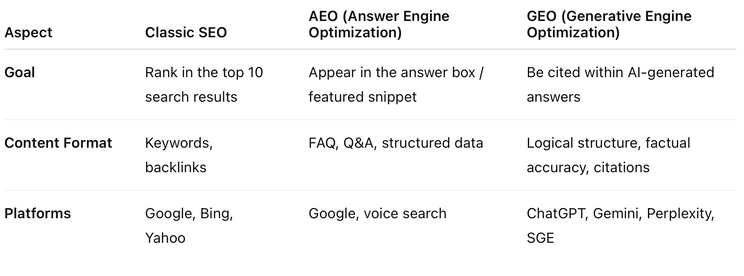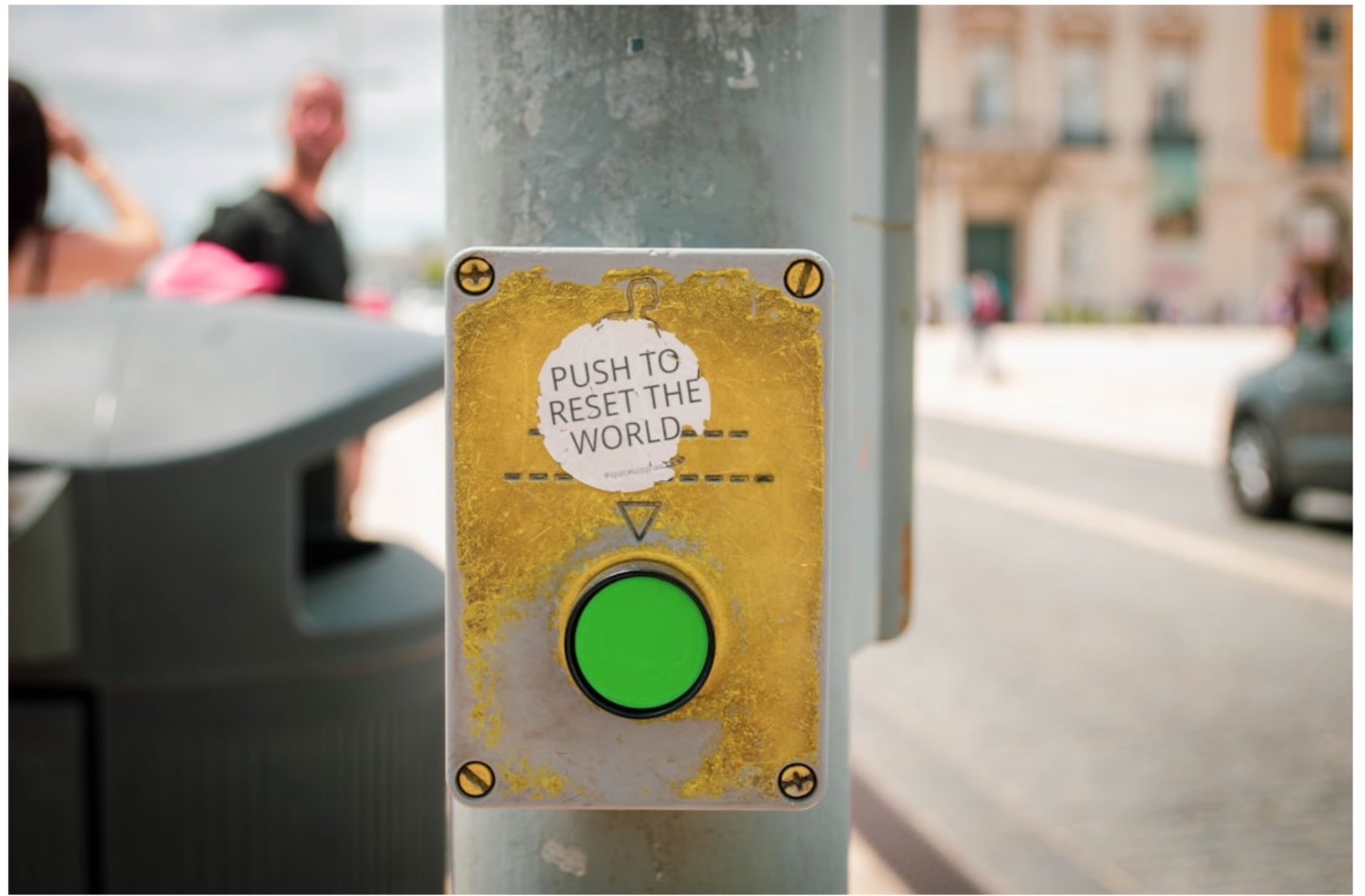How SEO
Is Changing
in the Age of AI
The world of search is shifting. In Google results, you now often see AI-generated answers — no clicks required. Queries are increasingly handled not by traditional search engines, but by generative AI models.
Google Search is already testing SGE (Search Generative Experience), Perplexity defines itself as an “answer engine,” and tools like ChatGPT and Claude have long trained users to expect complete answers instead of links.
In this new landscape, classic SEO tactics — keywords and backlinks — are no longer enough. Two new paradigms are taking the stage: #AEO (Answer Engine Optimization) and #GEO (Generative Engine Optimization).
Numbers and Trends
According to Upwork’s September Hiring Report, demand for digital marketing grew by 9%, while among SMBs, SEO rose by 8% and #SEM by 7%. Businesses are actively seeking professionals who can adapt their strategies to GEO and AEO.
As reported by Search Engine Land, implementing GEO can increase a brand’s visibility in generative AI responses by up to 40%.
(SEM — Search Engine Marketing — refers to paid advertising and Google Ads campaigns, or any activity that buys visibility in search results.)
AEO — Optimizing for “Answer-Based” Queries
AEO focuses on ensuring that your content provides clear, direct answers to user questions, increasing the chances of appearing in “answer boxes” or “featured snippets.”
It’s a shift from classic SEO toward voice and contextual search optimization. The goal of AEO isn’t to be in the top 10 — it’s to be in the answer itself.
GEO — Optimization for Generative Systems
GEO aims to make sure that a company’s or author’s content is referenced or cited within AI-generated responses (on platforms like ChatGPT, Gemini, Perplexity, and others).
If SEO competes for a place in search results, GEO focuses on ensuring that AI relies on your content when generating its answers.
SEO/AEO/GEO - Key Differences

New Tasks for Digital Marketers
AI is transforming the very essence of search — and with it, the role of marketers. The new goal is not only to rank higher in search results but to make the brand visible within AI responses.
This means:
Creating content that AI can easily “read” — with clear structure, factual accuracy, and concise phrasing;
Monitoring where and how AI systems mention your brand;
Focusing not just on traffic, but on trustworthiness as a source.
Once, we competed for a place in search results. Now — for a place in AI’s answers. Yet the essence of the work remains the same: to make meaning visible amid the noise.
Technology changes fast, but the core value endures — the ability to create content that’s worth showing, worth quoting, and worth trusting.
More Articles

How SEO Is Changing in the Age of AI
21-10-2025
AI is transforming search. Learn how SEO evolves into AEO and GEO — where visibility means being cited in AI answers, not just ranked in results.

Keeping the Human Mind Sharp When AI Can Do It All
16-10-2025
AI makes work easier, but thinking harder. Learn how to stay creative, critical, and human in the age of intelligent machines.

AI Workslop: Why Businesses Pay Freelancers to Fix AI
07-10-2025
AI speeds up work but often creates “workslop” - results that look complete yet lack value. Freelancers are the ones turning them into quality.

Disney Creative Strategy: How Ideas Become Reality
03-10-2025
Disney Creative Strategy: dream, plan, critique — a tool to guide ideas from imagination to real-world results.

Upwork Boost: Increasing Freelancer Profile Visibility
29-09-2025
Discover how Upwork’s Available Now badge and Profile Boost work, their costs, pros and cons, and which boost is best for freelancers or agencies.

10 Posts to Help You Get Started on Upwork
29-09-2025
We’ve gathered a set of articles to guide you through the essentials — from setting up your profile to building long-term client relationships.

Etcetera summer 2025 report
26-09-2025
Etcetera summer 2025 results: quiet season, new team members, shifting Upwork rules, and plans for an active autumn.

Upwork Feedback: a trust tool you should learn to read and write
22-09-2025
Upwork feedback is more than stars — it builds trust, shapes reputation, and guides choices. Learn how to read, request, and write reviews effectively

7 Hats: a thinking tool that saves time and nerves
08-09-2025
Instead of mixing emotions, facts, and criticism in chaos — this method by Edward de Bono helps separate thinking modes.

Upwork: From Simple Fees to Pay-to-Play
29-08-2025
Discover how Upwork’s fees evolved from flat 10% to a pay-to-play model with Connects, boosts, and variable 0-15% commissions in 2025.

Upwork Reset 2025: How to Refresh Your Freelance Strategy
25-08-2025
Discover 5 practical steps to reset your Upwork strategy in 2025: update skills, rethink pricing, optimize proposals, and grow with the market.

How to Build a Team That Won’t Fall Apart in a Crisis
22-08-2025
How to build a strong team that survives crises: Denys Safonov shares lessons from 11 years of leading the agency Etcetera through global challenges.
